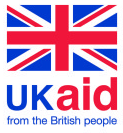In 2008, the Indian government established the Unique Identification Authority of India (UIDAI), giving it the mandate to provide a unique ID, called Aadhaar, to each of India’s 1.2 billion residents. Aadhaar is easily the world’s most ambitious digital identity programme, and by most measures it has been a huge success. Current estimates are that Aadhaar has now reached 1.12 billion enrolments (roughly 94 per cent of the population), the Indian government is ramping up the use of Aadhaar for the delivery of subsidies and other social welfare benefits, and there is also evidence that Aadhaar is playing a key role in India’s migration to a cashless economy.
From its inception, Aadhaar – a Sanskrit word that means ‘foundation’, or ‘base’ – was designed to reach even the most excluded residents and those least likely to possess an official identity: women, migrants, children and those living in hard-to-reach areas. Underpinning this ambition was the Indian government’s recognition that proof of identity is a key driver of socio-economic development, enabling individuals to access vital services such as healthcare, education, mobile and financial products, and a myriad of government subsidies. In the GSMA Digital Identity team, we are always interested in deepening our understanding of national identity programmes like Aadhaar: what makes them successful, what challenges they face, how their success can be replicated and, importantly, the opportunities they create for mobile network operators (MNOs) to provide life-enhancing mobile services.
In our newest case study, we take a look how the Aadhaar project was designed and implemented to ensure that it is inclusive, secure and trustworthy. To help with this, we have explored Aadhaar through the lens of the World Bank’s principles for identification. Developed in partnership with the GSMA and a number of other public and private sector stakeholders, these principles are considered fundamental to maximizing the benefits of identification systems to achieve sustainable development. Among other things, in order report we highlight:
- How Aadhaar’s enrolment processes ensure continuous universal coverage that is free from discrimination and accessible to all residents, including the most disadvantaged;
- How Aadhaar’s various features – such as the biometric deduplication system and the development of the India Stack – ensure that the system is robust, secure, responsive, and sustainable;
- How, in the absence of data privacy laws in India, UIDAI has worked to establish its own stringent security and data privacy policies to ensure that the information collected from residents is private and secure.
The second half of our report looks at how Aadhaar is having – and will continue to have – a significant impact on the mobile industry in India. We point to a recent report by the GSMA that has found that the Aadhaar-enabled e-KYC platform reduces the cost of the Know-Your-Customer (KYC) process for operators from Rs 40 ($0.60) per customer to Rs 5 ($0.07), significantly lowering the overall cost of customer acquisition. We are excited to see that Aadhaar platform is now allowing a handful of MNOs to start operating their own banking services by acting as ‘payments banks’, leveraging Aadhaar, mobile technology and extensive distribution networks to provide cost-effective, basic financial services low-income customers. At a time when many MNOs are looking for opportunities to build long-term viability, and in the midst of an extremely competitive environment and low average revenue per user (ARPU), payment banks represent an exciting new opportunity to drive growth, promote digital payments and reduce customer churn.
Our team will continue to follow Aadhaar’s progress with great interest in the coming months. We were interested to see a recent report indicating that the department of telecommunications (DoT) has directed all MNOs to re-verify existing customers using their Aadhaar number and biometric details by next year, an exercise that will require operators to register over one billion SIMs. We have conducted extensive research on mandatory SIM registration, highlighting how such exercises have benefitted operators and mobile customers in other markets. We are also following important debates in India’s supreme court, which will influence whether the government can make Aadhaar mandatory for government benefits and ensure that personal data is protected. There is no doubt that Aadhaar will continue to play a crucial role in providing residents with greater and more efficient access to life-enhancing services, including mobile services. But to be a truly inclusive and sustainable digital identity, it is crucial that the government ensures that an individual’s right to privacy is protected, especially if services are to reach the individuals who feel most at risk of exploitation.
The GSMA Digital Identity Programme is currently funded by the UK Department for International Development (DFID), and supported by the GSMA and its members.


